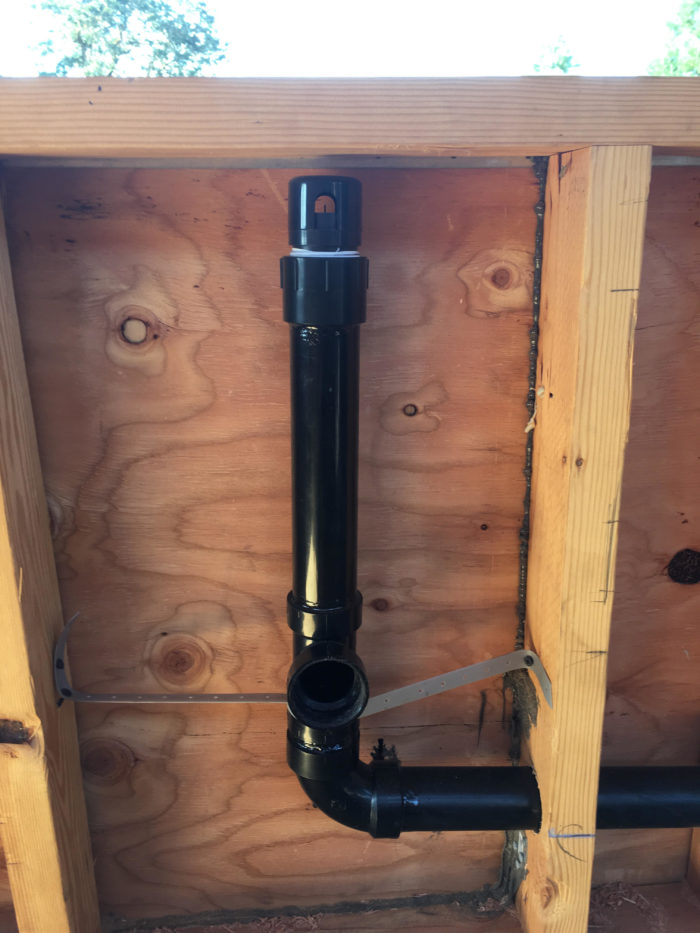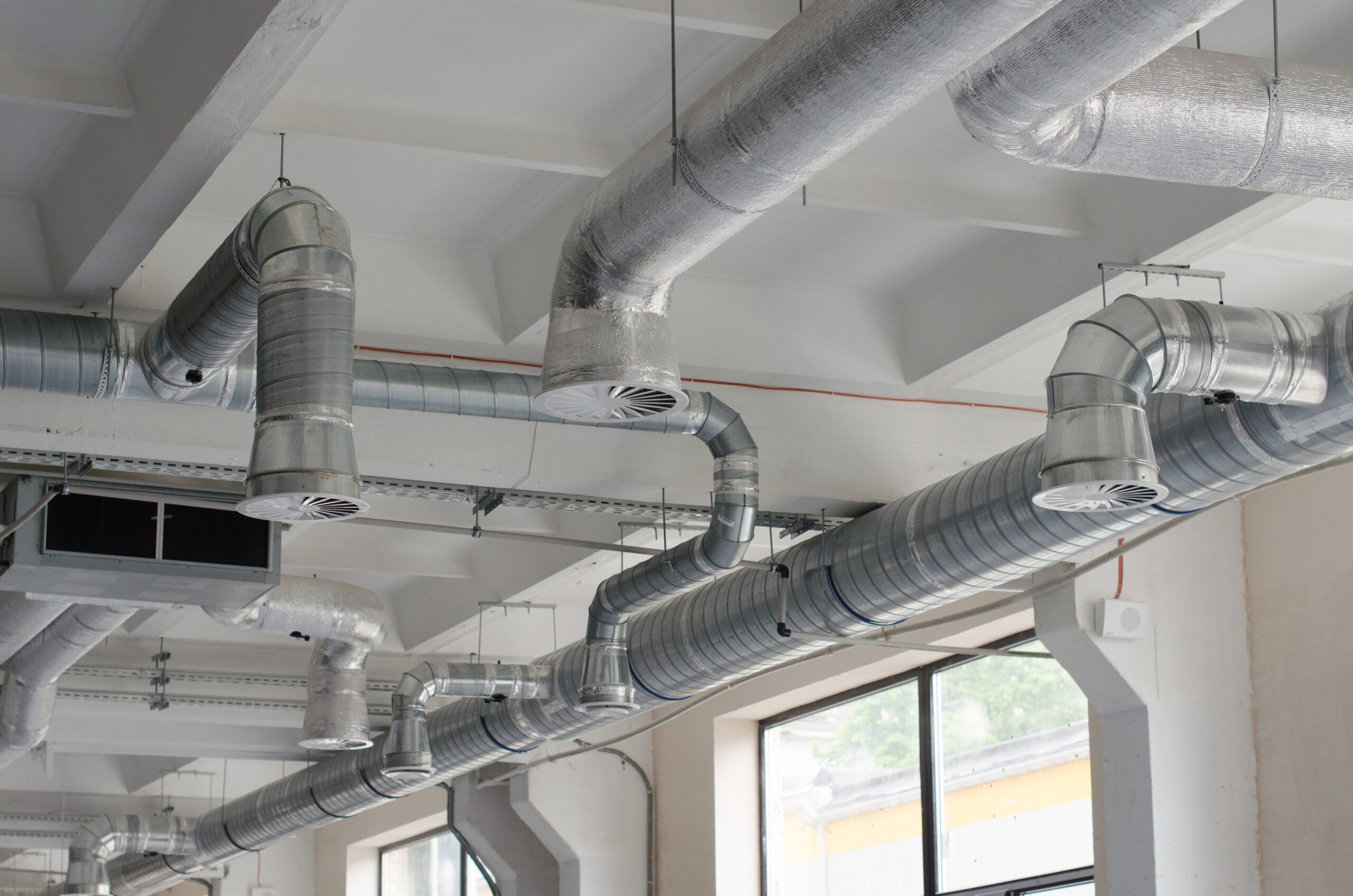The Significance of Ventilation in Residential Plumbing Systems
The Significance of Ventilation in Residential Plumbing Systems
Blog Article
Right here further down you can locate a bunch of professional answers related to Essential Plumbing Vent Pipes: Understanding Their Role.

Correct air flow in pipes systems is frequently overlooked, yet it is crucial for keeping the capability and safety of your home's pipes. Ventilation aids regulate atmospheric pressure, protect against the buildup of harmful gases, and ensure the efficient removal of waste. In this overview, we will discover the significance of proper plumbing ventilation, how it works, and the benefits it brings to your plumbing system.
Recognizing Air Flow in Plumbing
Ventilation in plumbing refers to the network of pipelines that allow air to stream with the water drainage system. These vents serve multiple purposes, including managing atmospheric pressure within the pipelines, preventing sewer gases from getting in the home, and helping in the smooth circulation of wastewater.
Just How Ventilation Functions in Pipes Solutions
Atmospheric Pressure Policy
Correct ventilation keeps balanced atmospheric pressure within the plumbing system. When water flows through pipes, it displaces air. Without ample air flow, this displacement can create adverse stress, leading to slow down drains or siphoning of water from traps, which can trigger unpleasant smells to leak into the home.
Protecting Against Drain Gas Accumulation
One of one of the most vital features of pipes vents is to avoid sewer gases, such as methane and hydrogen sulfide, from gathering within the home. These gases can pose significant health and wellness threats and are extremely flammable. Vent pipelines enable these gases to get away safely outside.
Assisting in Waste Elimination
Air flow aids in the reliable elimination of wastewater by stopping airlocks in the drain system. When air can move easily with the vents, it allows water and waste to stream smoothly with the pipelines, lowering the danger of obstructions and backups.
Kinds Of Pipes Vents
Key Heap Vent
The major stack vent, additionally called the air vent pile, is the key vent in a pipes system. It expands from the major drain align through the roof, enabling gases to leave and fresh air to enter the system.
Branch Vent
Branch vents connect to the main pile vent and serve specific components, such as sinks, commodes, and showers. These vents ensure that each component has ample air flow to work effectively.
Air Admittance Valve (AAV).
An Air Admission Valve (AAV) is a one-way shutoff that permits air to get in the plumbing system without the need for a traditional air vent pipeline extending through the roof. AAVs are typically used in improvements or areas where setting up a basic vent is not practical.
Indications of Poor Air Flow in Pipes.
Slow Draining Fixtures.
If your sinks, bathtubs, or bathrooms are draining gradually, maybe an indicator of poor air flow. Inadequate air flow can develop a vacuum cleaner effect, making it difficult for water to drain pipes appropriately.
Gurgling Seems.
Gurgling noises coming from drains are frequently a result of air being sucked with water catches due to unfavorable pressure in the pipelines. This is a clear indicator of inadequate air flow.
Unpleasant Smells.
Sewage system odors inside your home are a warning that your pipes system is not properly aerated. This can suggest that sewage system gases are not being adequately aired vent outside, resulting in potentially unsafe problems.
Common Air Flow Mistakes.
Insufficient Vent Sizing.
Making use of small air vent pipelines can result in bad air flow and stress imbalances in the system. It's vital to use vents that fulfill the details requirements of your plumbing system.
Improper Vent Placement.
Putting vents as well far from the fixtures they serve can decrease their performance. Proper positioning makes certain that air can move freely and successfully via the system.
Disregarding Code Demands.
Building codes provide details standards for pipes air flow. Neglecting these codes can result in a system that stops working to work properly and might bring about expensive repair services or carcinogen.
Advantages of Appropriate Ventilation.
Enhanced System Effectiveness.
Appropriately aerated pipes systems operate much more efficiently, with fewer blockages, faster draining pipes, and much less pressure on the pipes. This performance extends the life-span of the plumbing system.
Improved Air Quality.
By stopping drain gases from entering your home, correct air flow adds to much better indoor air top quality, making your living atmosphere healthier and much more comfortable.
Stopping Water Damage.
Sufficient air flow assists prevent water from being siphoned out of traps, which can lead to sewer gases getting in the home and creating water damage gradually.
Actions to Make Certain Correct Air Flow.
Consulting Plumbing Codes.
Always seek advice from regional plumbing codes when creating or modifying your pipes system. These codes supply the required standards for proper venting and ensure your system satisfies security requirements.
Routine Assessment and Upkeep.
Routine assessments can aid identify possible ventilation issues before they come to be major troubles. Maintenance jobs, such as cleansing air vent pipelines and checking for clogs, are crucial for keeping the system in good working order.
Professional Installation.
For brand-new setups or significant adjustments, it's wise to work with a specialist plumbing professional. They have the proficiency to ensure the ventilation system is correctly developed and installed according to code.
Final thought.
Correct ventilation is an essential component of any plumbing system, ensuring that it operates effectively and safely. By comprehending the value of ventilation, acknowledging the indications of poor ventilation, and taking steps to keep your system, you can protect against costly problems and safeguard your home's air quality.
4 Things You Should Know About Your Plumbing Vents
What Plumbing Vents Are
Also called a vent stack, a plumbing vent is a vertical pipe attached to your drain line that runs through your roof. The plumbing vent pipe, or plumbing air vent, removes gas and odors from your plumbing system and allows fresh air to enter the pipes, helping the water to flow out of the drain pipes.
What Plumbing Vents Do
Plumbing vents have two basic functions. One of which is to allow unpleasant smelling wastewater and sewer gasses to escape your plumbing system instead of entering your home. Plumbing vent pipes are typically located on roofs, away from windows, to ensure the fumes exit the home completely.
The other function of the plumbing vent is to move fresh air into your plumbing system. This helps move water through every plumbing fixture in your house, like toilets and sink drains. Think of the way in which you need to let a little air into the bottle as you pour soda in order to make the drink flow smoothly.
Different Types of Plumbing Vents
True vent: This is the most common vent option. In simplest terms, a true vent is a vertical pipe attached to your drain line that exits through the roof. They often function as the main vent that other fixtures can connect to. Re-vent pipe or auxiliary vent: Attached to the drain line near specific plumbing fixtures, re-vent pipes run up and over to connect to the main vent. Common vent: Two plumbing fixtures installed on opposite sides of a wall are typically tied into the vent stack using something known as a sanitary cross. Wet vent: This venting option operates as a drain pipe and a vent at the same time. Wet vent drainage systems drain water from one fixture while venting the air from another. Although they’ve been used for over 100 years, wet vent systems have only recently been added to the plumbing code in many areas. If you’re planning on installing one in a bathroom remodel, make sure you check your local code prior to construction. Loop vent: For free-standing fixtures like kitchen island sinks, loop vents are ideal. These vent pipes run under the floor, rise from the P-trap, and create a loop inside the cabinet sink. Air admittance valve: An AAV is a one-way mechanical valve typically installed at the site of the plumbing fixture. AAVs allow venting to occur without having to tie into a larger venting system. They’re ideal for venting fixtures where you aren’t able to easily connect to an existing vent system. Common Plumbing Vent Issues
Although vent pipes typically don’t have water flowing through them, they’re still subject to many typical plumbing issues. For example, clogs are one of the most common problems associated with sewer vent pipes. If your vent pipe gets clogged, all of your plumbing fixtures tied into the vent stack will be affected.
A sink with a slow drain that bubbles and gurgles or a strong sewage smell around your toilet are both indicators that your toilet vent pipe is clogged. Because most vent pipes exit through the roof, old leaves, twigs or even a bird’s nest could be clogging the pipe.
Clogs in your vent pipe system cause a buildup of negative pressure, meaning that water won’t be able to flow out of your home very well. It’s similar to putting your finger over the opening of a straw to trap water inside. When you remove your finger, the water is able to flow out of the straw.
If you suspect you have any blockage in your vent, make sure you have a professional come examine the situation. Left unchecked, a blocked air vent can lead to other costly repairs, like leaks and sediment buildup.
Under Pressure
Pipe vents are essential aspects of a home’s plumbing system. Owning a home means learning about all sorts of things you never put much thought into before. But by understanding as much as you can about the important systems of your home, you can keep those budgets intact and those anxiety levels low.
https://www.homeserve.com/en-us/blog/home-improvement/plumbing-vents/

I found that blog entry on What Is A Plumbing Vent & How Do They Work? when doing a search on the internet. Sharing is nice. You won't know, you may just be helping someone out. Many thanks for your time. Kindly check our blog back soon.
Book A Service Call Report this page